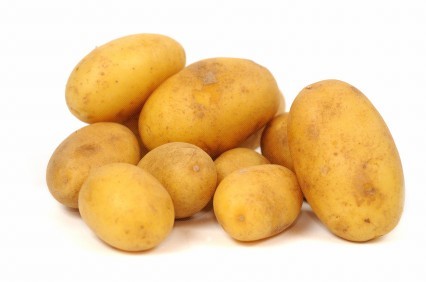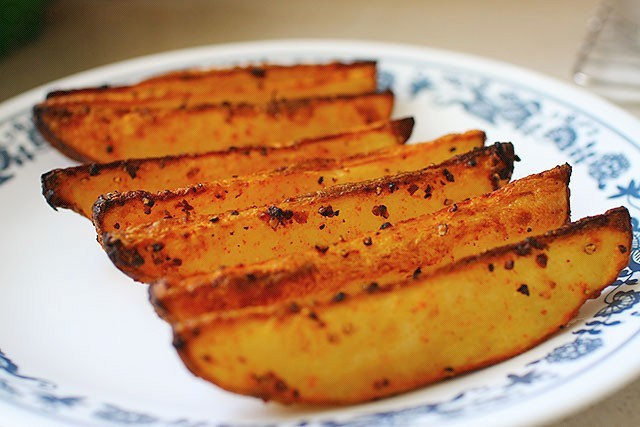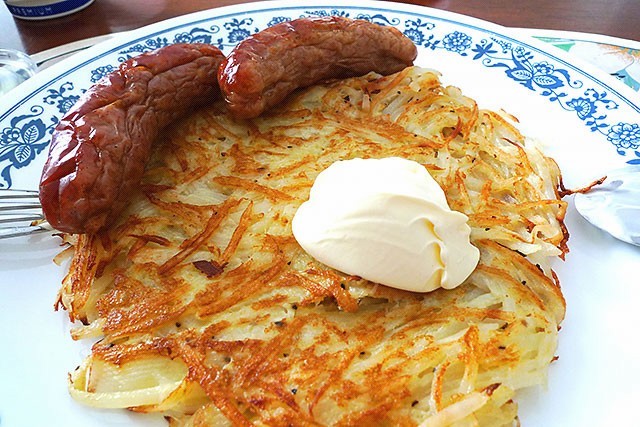What’s the first thing that comes to mind when you hear the word “potato”? I bet that it was French fries, because that golden sliver of deep-fried potato has been ingrained into our public consciousness worldwide by McDonalds.
Originating from Peru, the potato spread all over the world through the Spanish who brought them back with them and it became an important part of many cuisines. From there, the potato has quickly grown to become one of the world’s top food crops (no doubt helped a lot by McDonalds).

Although the potato is best known for its high starch content, what’s not so obvious is that the potato has almost no fat or cholesterol content at all! Additionally, potatoes contain an assortment of nutrients and minerals, such as vitamin C and iron. In fact, a medium sized potato contains almost 50% of your daily needed vitamin C! As such, a diet of just potatoes and milk could supply all the nutrients a human body would need, although I wouldn’t recommend trying this out.
There is a huge variety of potatoes out there but depending on which cookbook you use, you’ll find that they typically differentiate the potatoes into new vs. old, or waxy vs. floury. But what exactly do these differentiations mean? New vs. old is a bit more straightforward; new potatoes are the types that mature early and taste sweeter while old potatoes mature slower and grow larger but have converted their sugars into starch.
What is probably more important for cooking is whether the potato is waxy or floury. Waxy potatoes are generally firm, with high water content and low starch. Because they hold together well in cooking, they are used in sautéing, boiling, or in gratins. However if you used waxy potatoes for mashing or pureeing, it might quickly turn into a gluey mess. Hence floury potatoes are used for mashing as they contain more starch and break up more easily when cooking, giving you that light and fluffy texture that you want for mashed potatoes.
Unfortunately, majority of the potatoes sold here are neither particularly waxy nor floury but more like in-between both types. They are more generic and all-purpose hence can be used for all types of preparations but not excelling in them. It would be worth going through different types of potatoes with some trial and error to find the type that you prefer.
There are a huge number of ways to cook potatoes as well. We’ve just discussed mashing them like
in this recipe here, and of course the next most popular way is frying them.
Besides that, you can prepare in the wet styles of boiling or steaming, and the dry styles of roasting or baking of which I have a
good example here. Most of the nutrients and vitamins are in the skin and outermost layer of the potato so if you must remove the skin, try to peel it at thinly as possible.
All these methods of cooking figure prominently in regional dishes all over the world. Thanks to Marché, the rösti from Sweden is most well-known to us! I loved it so much that I tried to make it at home as well and
here’s my recipe for it.
But of course there are other famous potato dishes like the patatas bravas of Spain, gnocchi of Italy, and the gratin dauphinoise of France.
Now that you know more about potatoes, the next time you pick up some at the supermarket, try cooking one of the many dishes that use potatoes!
---
Stil not sure what to do with essential ingredients like eggs, tomatoes, etc? Check out other articles at
OpenRice Ingredients where you can find out more on how to cook up a storm with these essential ingredients! Have fun!
Discover the best Western Food in Singapore
Play with your food: 10 DIY restaurants to check out







